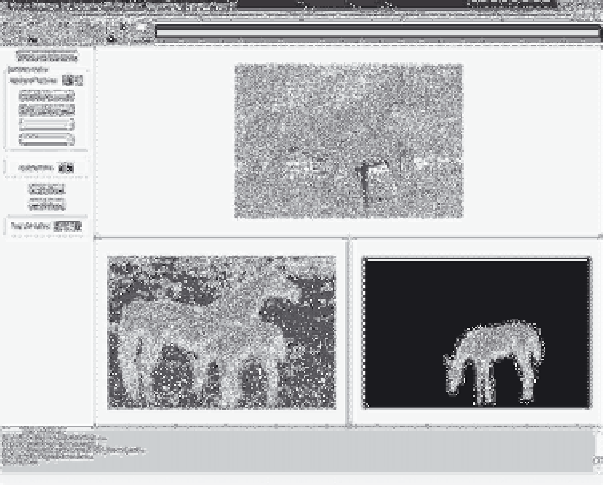Image Processing Reference
In-Depth Information
objects by the features that describe them and that people tend to grasp not single objects,
but classes of them (Orlowska, 1982).
For instance, given a set of probe functionsB, and an image A, this frame can perform
the perceptual erosion or dilation using B = O
/∼
B
as the SE. Also, the NSI is calculated if
perceptual erosion was selected. A sample calculation using this frame is given in Fig. 7.15
and was obtained by the following steps:
FIGURE 7.15: Sample run of the segmentation evaluation frame using a window size of
2×2, andB={φ
NormG
,φ
H
Shannon
}.
1. Click Load Image & Segment button.
2. Select an image click Open.
3. Select segmentation image and click Open. Image should contain only one seg-
ment and the segment must be white (255, 255, 255) and the background must
be black (0, 0, 0). The image is displayed in the top frame, while the segment is
displayed in the bottom right (make sure this is the case).
4. Select number of features (maximum allowed is four).
5. Select features (see Section 7.4 for a list of probe functions).
6. Select window size. The value is taken as the square root of the area for a square
subimage, e.g., a value of 5 creates a subimage of 25 pixels.
7. Click Erode to perform perceptual erosion and segmentation evaluation. Click
Dilate to perform perceptual dilation (no evaluation takes place during dilation).
The result is given in Fig. 7.15 where the bottom left window contains the an image of the
equivalence classes where each colour represents a different class. The bottom right window
contains either the segments erosion or dilation. Clicking on any of the three images will
display the equivalence class containing the mouse click in the bottom right image. The



Search WWH ::

Custom Search